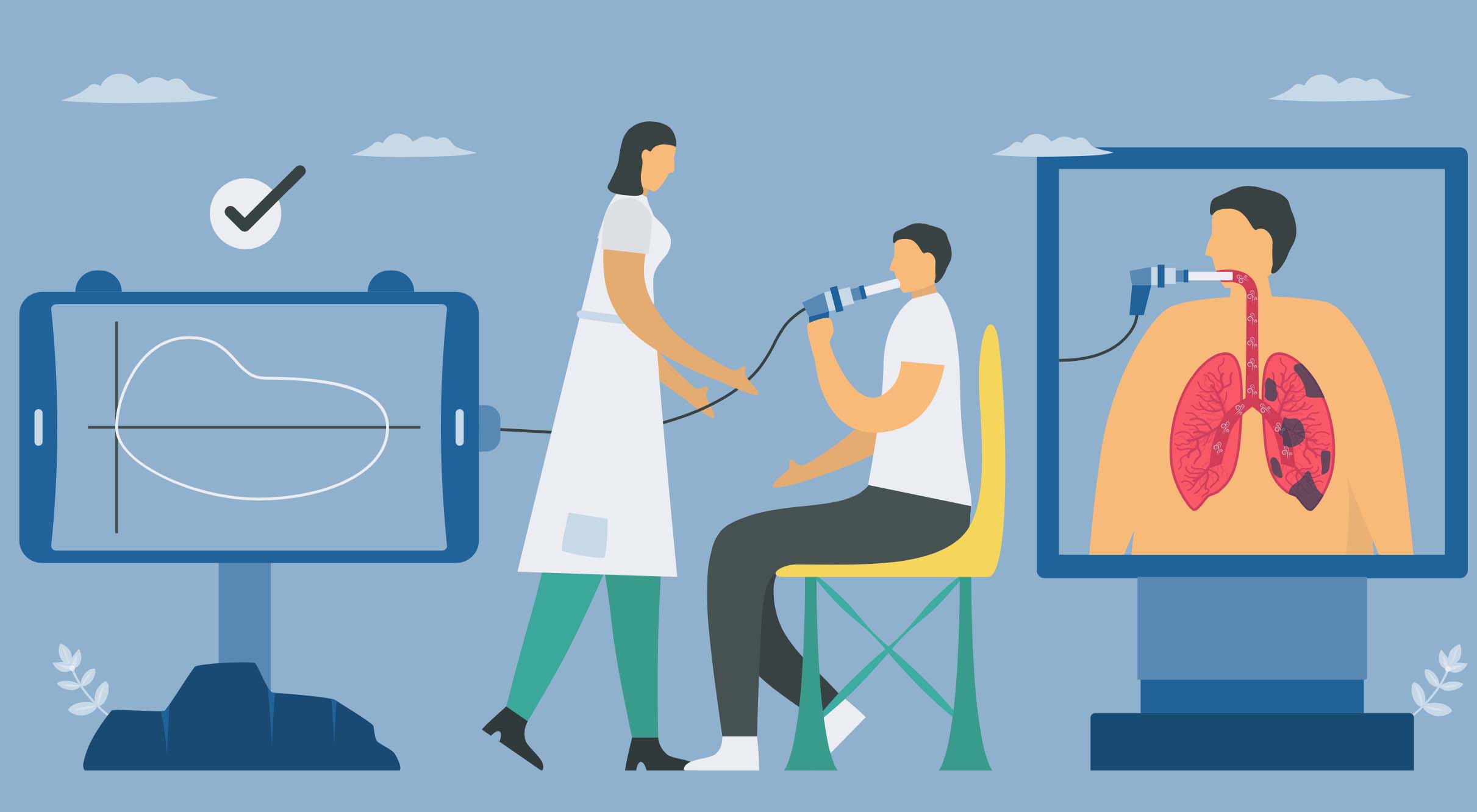Spirometry might sound like an intimidating word, but it is actually the most common type of pulmonary function or breathing test. Spirometry helps assess breathing patterns that identify pulmonary, or lung, disorders including asthma, pulmonary fibrosis, cystic fibrosis, and COPD. In this article, we’ll discuss what spirometry is, why spirometry is done, why it’s important in the workplace, how to prepare for spirometry, how to understand the test results, and where to go for spirometry.
What is Spirometry?
This common breathing test is done to check for pulmonary, or lung, conditions. It is a simple test that is easily performed. The test checks how well your lungs work by measuring the amount of air you inhale and the speed at which you exhale.
Why is Spirometry done?
A spirometry test may be ordered by your doctor if you have trouble breathing like wheezing, shortness of breath, or coughing. Your doctor will use this test to diagnose any pulmonary conditions you might have. Spirometry is also used to monitor the health of patients with diagnosed pulmonary disease. It is also used before surgery to check for lung health before undergoing anesthesia and the trauma of surgery.
-
Why workplace spirometry matter
Workplace spirometry tests matter because they detect medical conditions that require further treatment. Consistent testing is essential for occupational health. Many industries are required to have their employees take regular spirometry because of occupational health hazards.
How to Prepare for Spirometry
There are no risks to a spirometry test. At most you might feel lightheaded, short of breath, or dizzy for a moment or two after the test. Here are a few ways to prepare for your spirometry.
-
Wear loose clothing
You want to be able to breathe comfortably and fully. For those who wear bras, consider a loose sports bra, or removing the bra before the test. Make sure your waistband is loose enough to allow for a full belly breath.
-
Eat lightly
Don’t eat a large or heavy meal before your spirometry. The stomach is right next to the diaphragm, or big breathing muscle under the base of your rib cage. For it to expand properly while breathing, you need to have an empty or mostly empty stomach. Try a protein bar an hour or so before your test.
-
Take your medications
Take all your medications as prescribed, unless otherwise instructed by your doctor. Take them like normal at your usual time.
-
No smoking
If you smoke, refrain from smoking for six hours before your test. Talk to your doctor about a nicotine patch or gum to help with cravings before the spirometry.
-
Use inhalers as needed
If you are using a short-acting inhaler, try to avoid using it for six to eight hours before your spirometry.
What to Expect at a Spirometry
You will be asked to breathe into a tube that is connected to a machine called a spirometer. Your doctor or nurse will give you clear instructions before asking you to breathe into the spirometer. Make sure you ask questions if you don’t understand. Your nurse or doctor is a professional and will be used to questions. And they want you to ask questions because that means the test is more likely to be performed correctly. An incorrectly done test is of no use to anyone.
You will most likely be sitting down for your spirometer. The nurse will put a specially designed clip on your nose, to block off your nostrils from breathing. Next, you’ll be asked to take a deep breath and then put the tube connected to the spirometer in your mouth. Now you’ll breathe out as hard as you can for a few seconds into the tube. Note: you must have a tight seal between the tube and your lips, so purse your lips firmly around the tube. Next, this process will be repeated at least two more times to give the most accurate results. Start to finish, spirometry lasts about fifteen minutes and often less than that.
Understanding Spirometry Test Results
Here are the two important spirometry measurements.
-
Forced vital capacity (FVC)
FVC is the largest volume of air that you can forcefully exhale after taking your deepest breath. If your FVC is low, that shows constricted breathing.
-
Forced expiratory volume (FEV)
FEV is the amount of air you can expel from your lungs in one second. Doctors use this measurement to determine how severe your breathing problem might be. The lower the reading, the more significant the obstruction.
Where to Get a Spirometry Test for the Workplace
BioFunctional Health Solutions (BHS) offers workplace spirometry tests at their central and convenient locations near your organization. Protect your worker’s health and make spirometry easy with BHS. Contact us today to get started.
